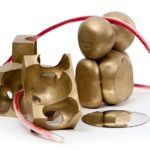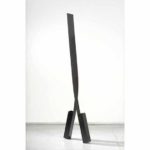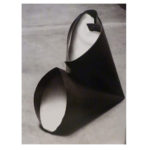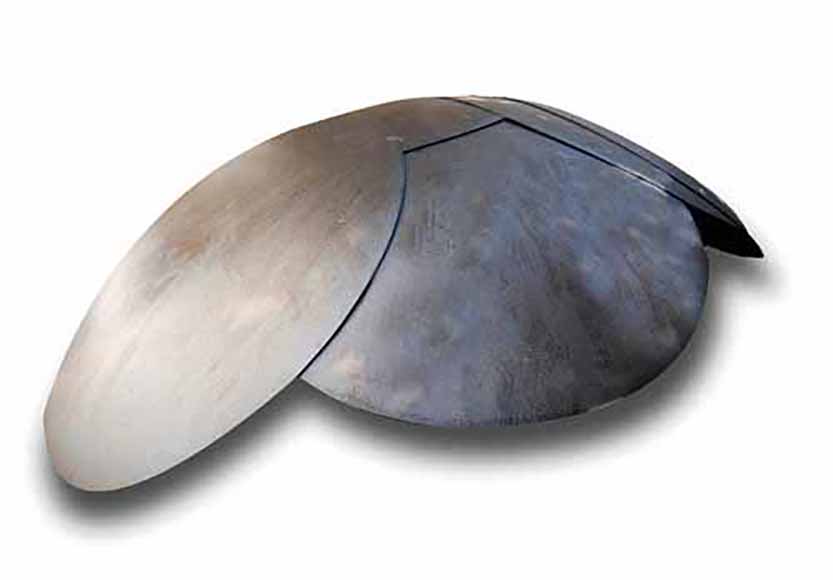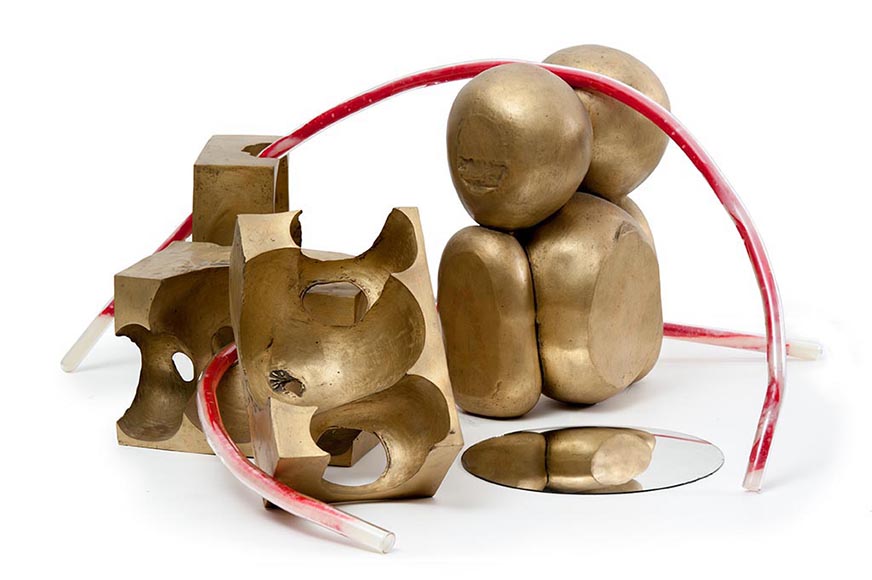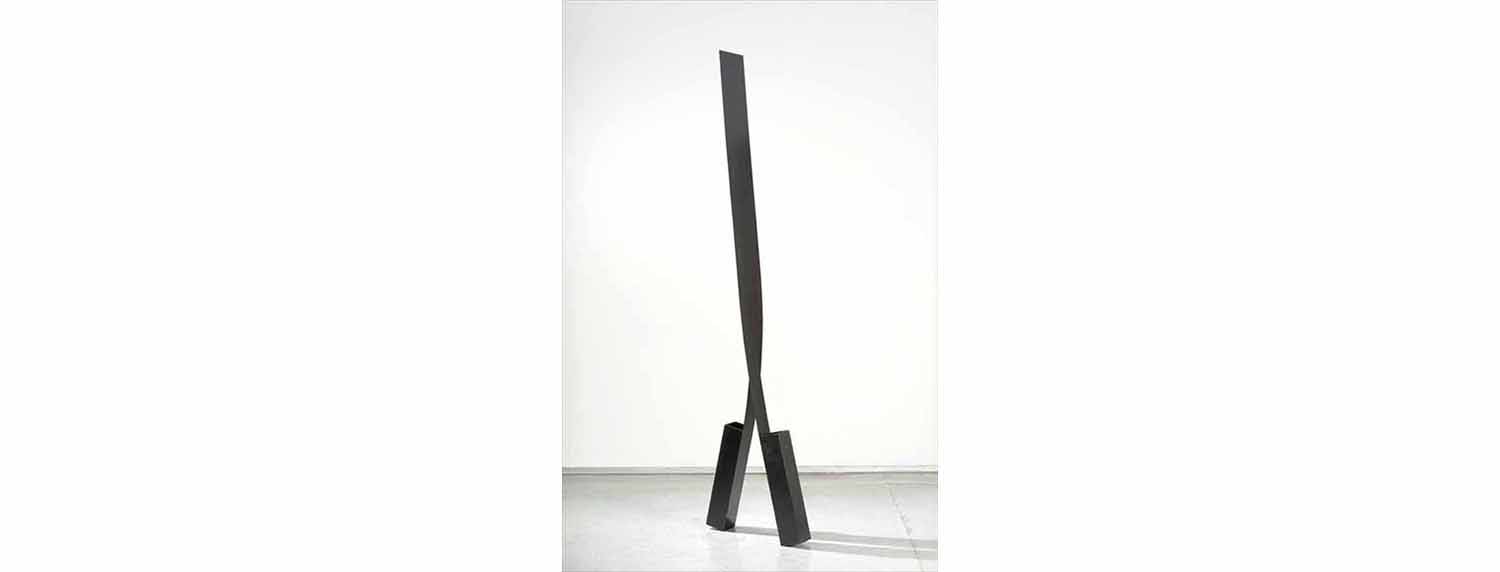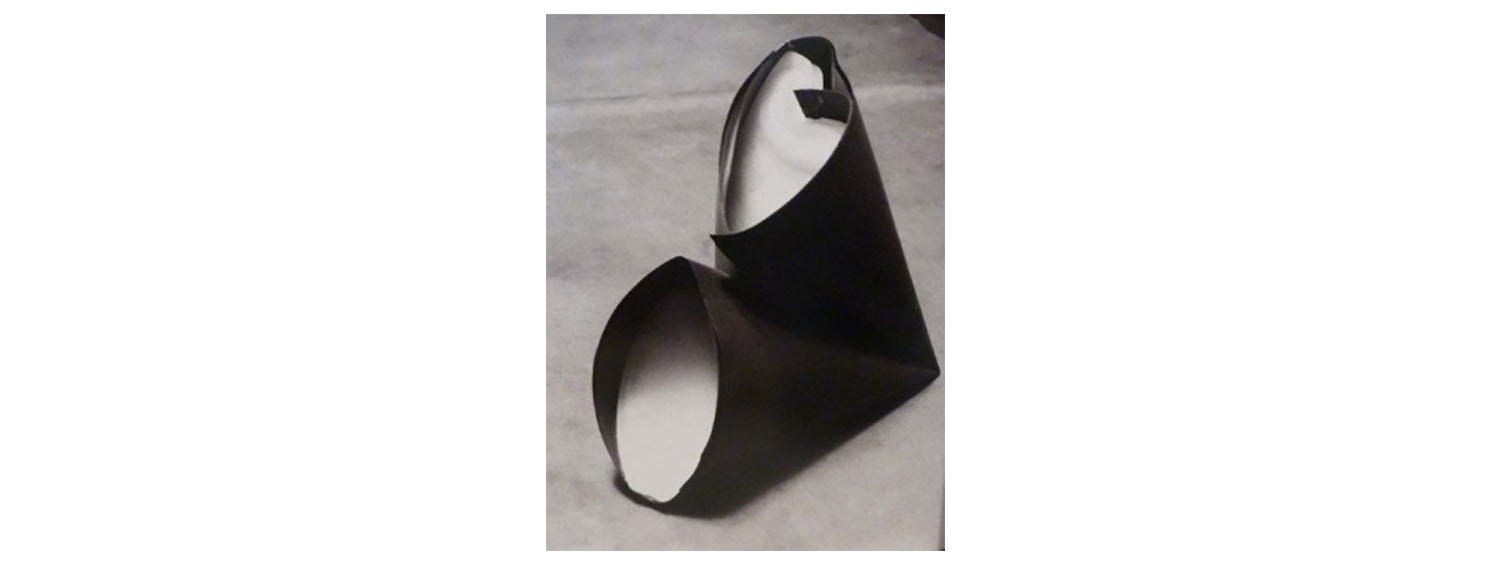It is in the sculpture that he came to find his own way and developped his most important works, starting with his individual exhibition at the MASP in 1974, when abstract linear structures showed up, in which the interest for the industrial materials usage is remarkable. The incorporation of these various materials in the same work – for example: glass, paraffin, silk and steel cable –, where the conventional meaning of each material is transformed, using them for this realization of joints and tensions, performed through cuts, folds and welds, in a creative process that demands a complicity of the audience looking at it, so that the singular aesthetic dimension that these sculptures have can be obtained, in such a way that one supports the other. It is a very frequent feature in his sculptures, as well as the use of liquids, materials with low melting temperature, flexible, that acquire their shape by gravity or other physical force that act on them.
He is from São Paulo, Brazil, born in 1945. Started his art studies in 1963, studying Architecture at Universidade Mackenzie and studying engraving at the Fundação Armando Álvares Penteado (FAAP). He holds a master’s degree in the History Department of FFLCH-USP. He graduated in Architecture and is one of the founders of Escola Brasil, along with Luiz Paulo Baravelli, Frederico Nasser and Carlos Fajardo. Back in 1966, he has founded, with Wesley Duke Lee, Nelson Leirner, Geraldo de Barros, Frederico Nasser and Carlos Fajardo, a group called Grupo Rex. Between 1984 and 1985, he has lived in New York as a scholarship holder at the John Simon Guggenheim Foundation. He was a professor at ECA-USP, FAAP and Mackenzie. He has helped founding the Malasartes magazine and the A Parte do Fogo newspaper, and several editions of the Bienal de São Paulo. In 1990, he had an exclusive exhibition at the MAC in Rio de Janeiro. In addition to solo exhibitions in Brazil and abroad, he has participated in numerous shows, such as the Bienal de São Paulo (1967, 1983, 1989, 1998), Brazil 500, Mostra do Descobrimento (1999), Bienalle de Paris (1980, special mention), Brazilian Art of the 20th Century (1987, Musée d’Art Moderne de la Ville de Paris), Biennial of Venice (1988), Biennial of Sydney (1998), ArteCidade (1994 and 2002), Mercosur Biennial (2001), Documenta (1992), Latin American Artists of XX Century (1993, Museum of Modern Art of New York). In 2003, the Cosac & Naify publisher released a book about his work. José Resende is one of the most important Brazilian artists from the second half of the 20th century.
Your sculpture has a diversity of materials – stones, metal plates, wood, etc. What makes you require this variety to perform it?
My works are constructions that require a large repertoire of even materials. In general they are ordinary things, present in the daily routine of urban life. They are glass plates, pipes, metal plates, steel cables, stone blocks, containers. I’ve used even railroad cars. In these constructions, these different materials are gathered through simple operations, always keeping in mind they have to be easy to understood by the audience, so that the audience can easily realize how it was performed and remake it with their eyes.
During this process, for these materials to be transformed, there are joints and stresses performed through cuts, bends and welds. Is the reason for this only a quest for a great aesthetic experience content, or by an inherent need of the materials for their juxtaposition? What leads you to have to consolidate a formal arrangement for the sculpture to be visualized, gain physical mass or acquire meaning?
I do not have an artisan character formation to master the chisel or the gouge that shapes the stones or transforms the wood. My access to art came through references that come from the constructive art inaugurated by the Picassian sculpture. Therefore, the diversity of materials is already an initial data, as well as constructing things instead of just transforming and shaping the materials. Since every construction is inaugurated with itself, it is the opposite of artisanal creation, whose knowledge is refined in the redoing of what is already known by tradition. In something that is constructed, the process is always inaugural, specific. It has to be created along with what is been done. I found the art through Wesley Duke Lee while I was studying Architecture.
To come from these diverse materials, in order for us to have a physical mass, does it come from a visual thought preceding this creation, a planning, a drawing, or for following the indication that this very material proposes or is being articulated?
The idea of design as a project has always been the driver of what I do from the beginning. I believe that the meaning of the work appears when what is ordinary, such as a piece of pipe, a rope, a piece of velvet, a small displacement, for joining another material or to be cut, crumpled or simply creased, turns into something else. This thing normally has no name, but it is something that concretely puts itself in the world, it start its existence. I believe that’s how poetry starts. When I think this hasn’t happened, these things go to the trash. It can be said that my artwork is like a poetry constructed only with very ordinary words, used in everyday life, trivially, only grouped in an unexpected way, they are able to generate surprising senses. They say things not yet said.
Do you believe that with this process of creation, where the conventional sense of each material is transformed, it is an additional requirement for the audience to become a co-author, or even an accomplice, to give your artwork the singular dimension that you want in its execution? Is the audience a part of it as well? Are they fundamental for your aesthetical experience during the creation of your work?
If the choice of materials always rests on things immediately recognizable by the spectator and the manipulation they suffer is always very apparent, there is indeed a call for an active attitude, a participation from the audience. The scale of the work itself is always relative to the watcher and its situation in space as well. If it is possible to say that the work is a drawing in space, it aims to include the viewer in that space.
A relevant data in your sculpture is the dialogue that it has with other languages, such as photography and painting. Once more, the conventional sense is modified. Is it one more data that you add so that it acquires other senses for the audience?
I fail to see any relation of my work to both photography or painting. I create things that are concretely placed in the world. Your understanding is in your presence. The meanings that are able to be awaken are constituted from the work itself. It is not there for nothing.
What about your titles? There’s a strength of world in them. Is the presence of the titles essential for understanding what we see? Or is it, when there’s a title, just one of the many possibilities to understand your work?
In fact, about titles, my work almost never have them. Every so often, from the contact with them, nicknames pop up in my mind, such as a piece made with an iron plate that is cut several times from one end until almost reaching the opposite side. They form then several legs, supporting this plate and making it stand. It ended up being called Fred Astaire.
How many of your works will compose the exhibition at the art gallery Paulo Darzé Galeria de Arte? For the most part, what materials do the sculptures bring?
The exhibition at Paulo Darzé Galeria de Arte consists of artwork produced at several different times: older work, by which my production is easily identified, the oldest one being a slightly different version, but it is practically the same idea from the piece of the collection at Jardim de Esculturas do Unhão (I’m very proud of the fact a picture of that piece is gracing the catalog cover of that institution), to pretty recent work, never exposed before, made in glass, paraffin, silk and steel. It was a curious experience to draw this transversal line and to witness the coexistence of work produced in such diverse moments of my life. The older ones are made of different metals: SAC 50 steel (corten type), stainless steel, SAC 50 steel, bitumen coated, lead, stainless steel tubes (in a work I ended up dedicating to Maria Martins for perceiving relationships that surprised me during the construction, because until that moment there was very few pieces of hers I knew and yet, the identification happened immediately, probably by some image that was retained in my memory even though I wasn’t completely aware of it).
(Interview/August, 2010)



